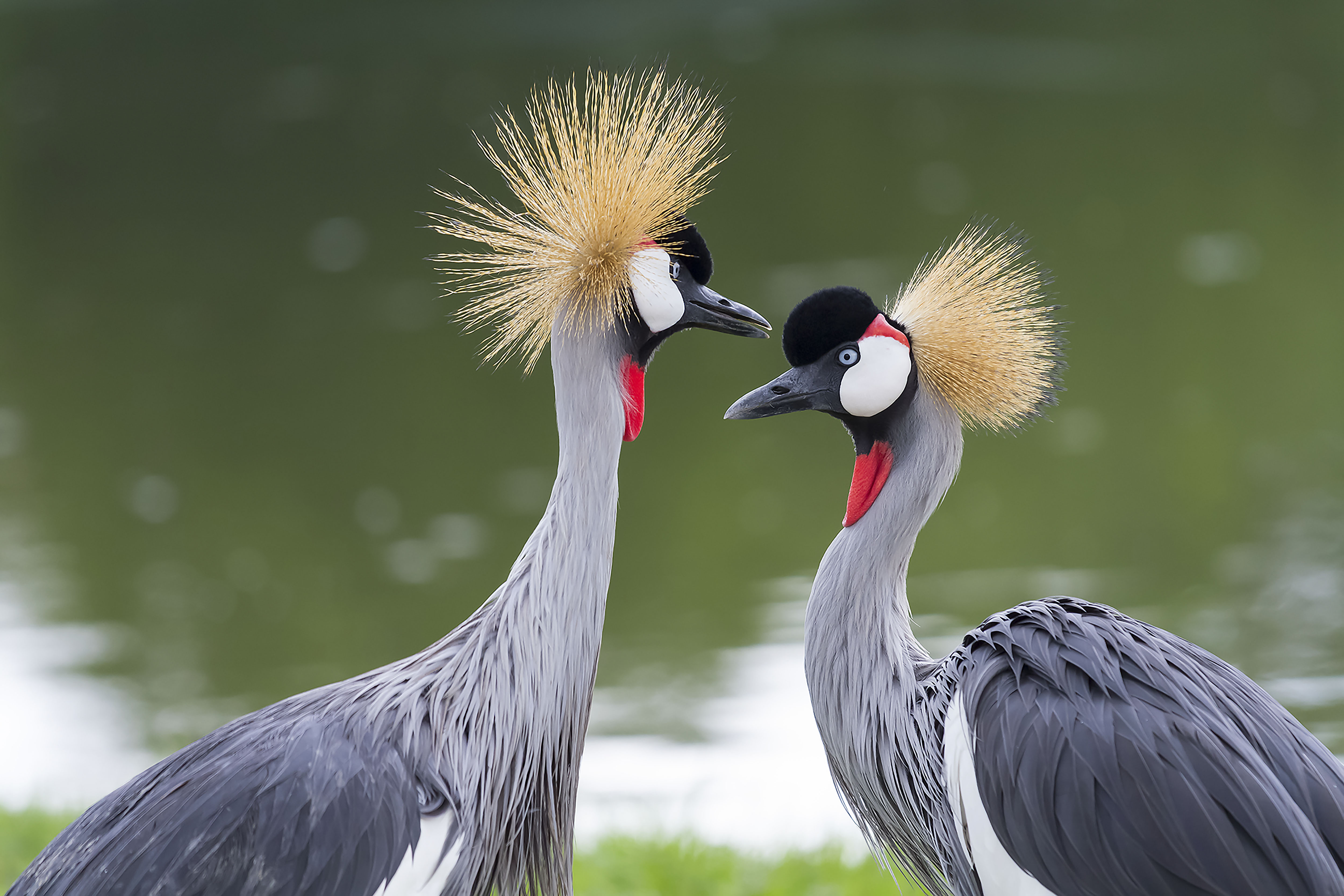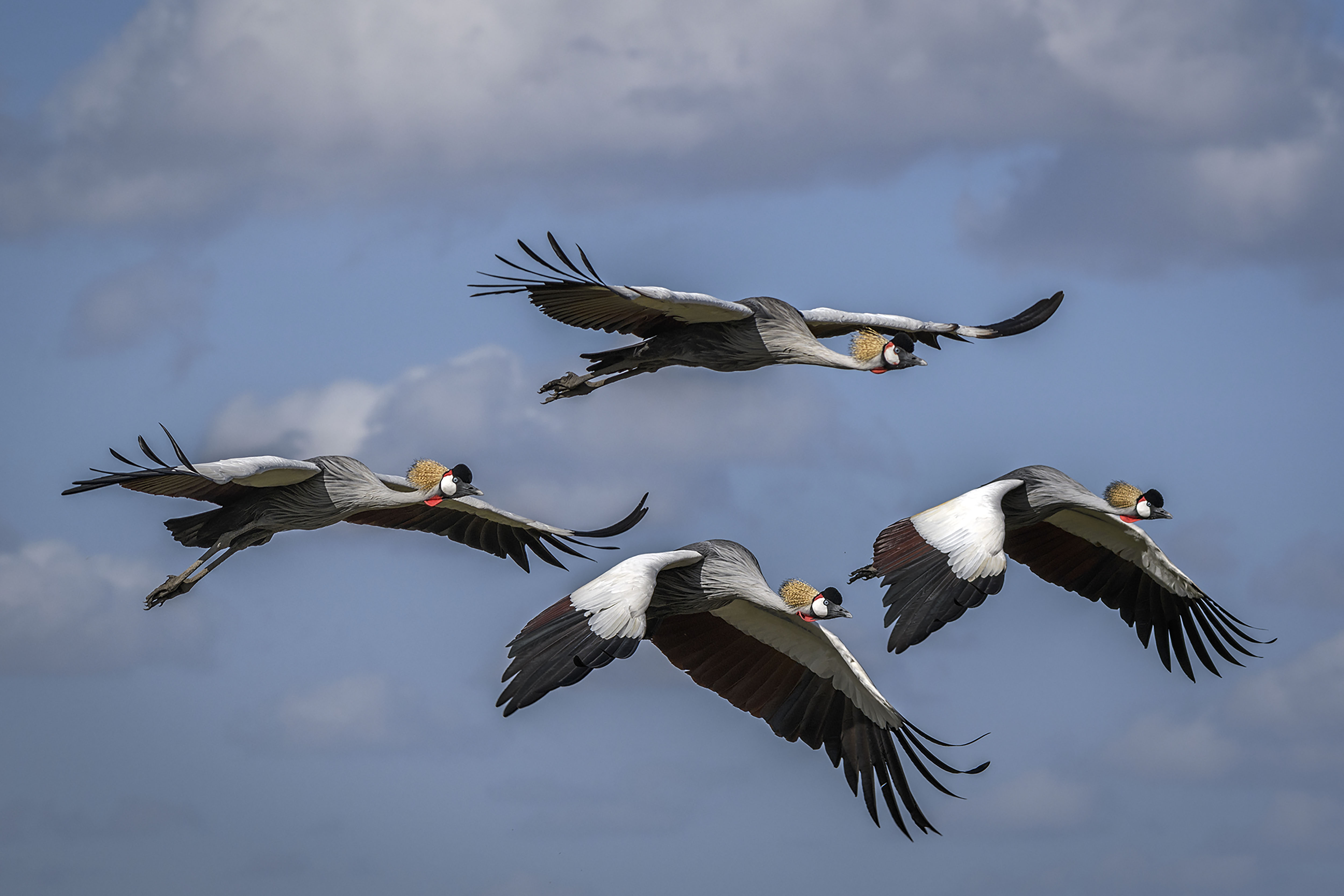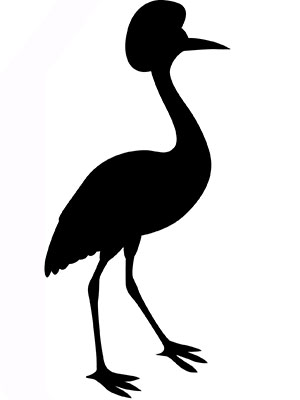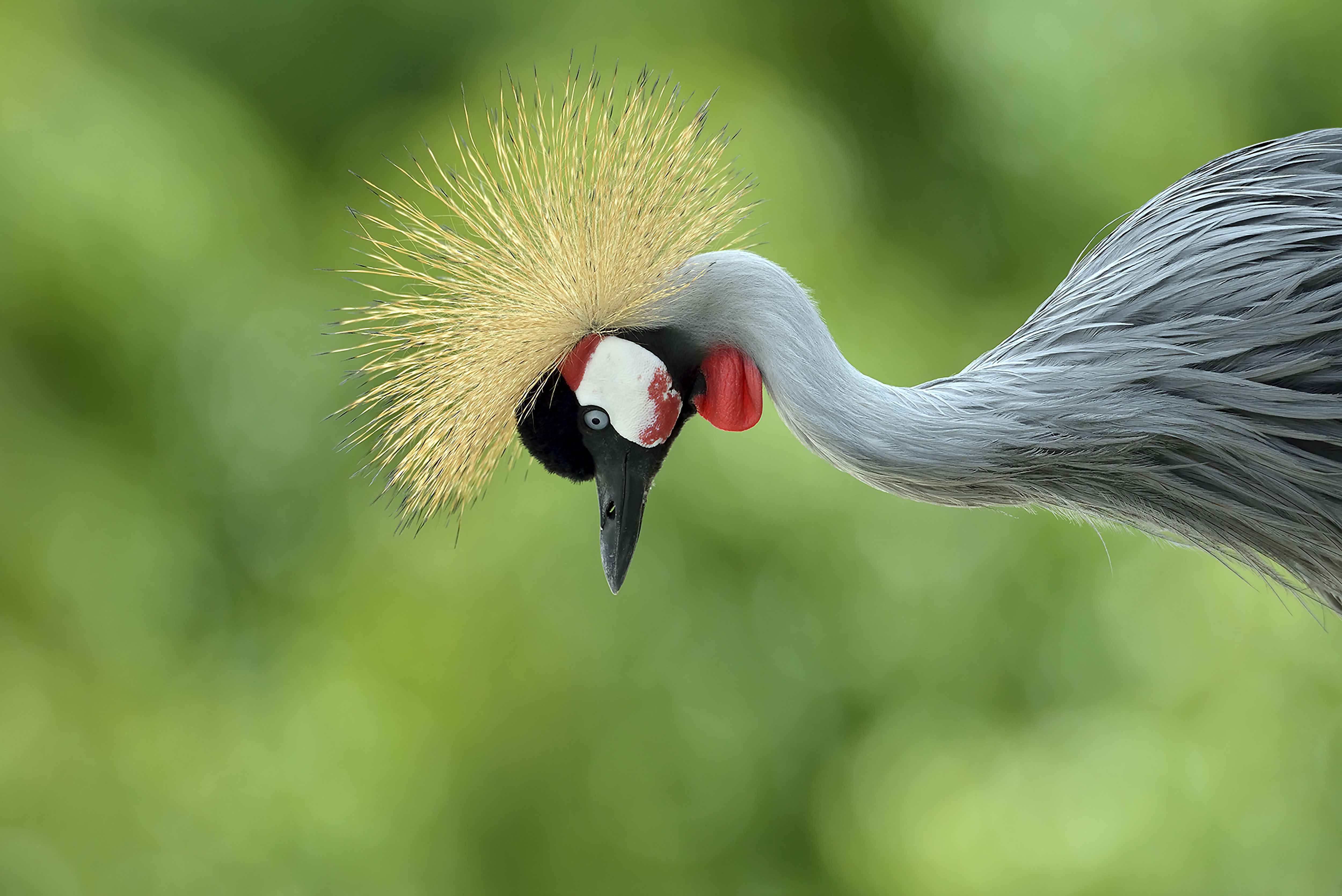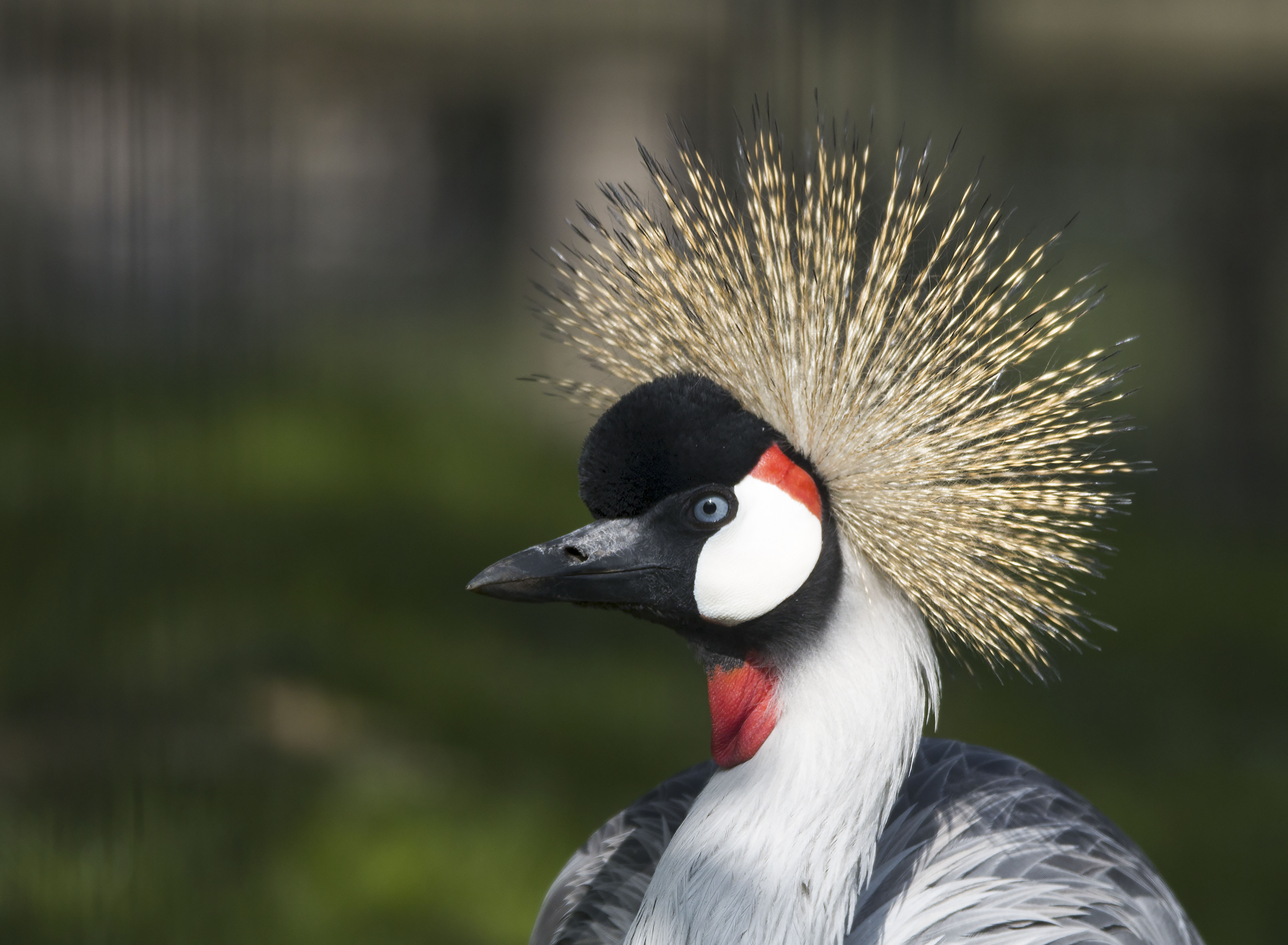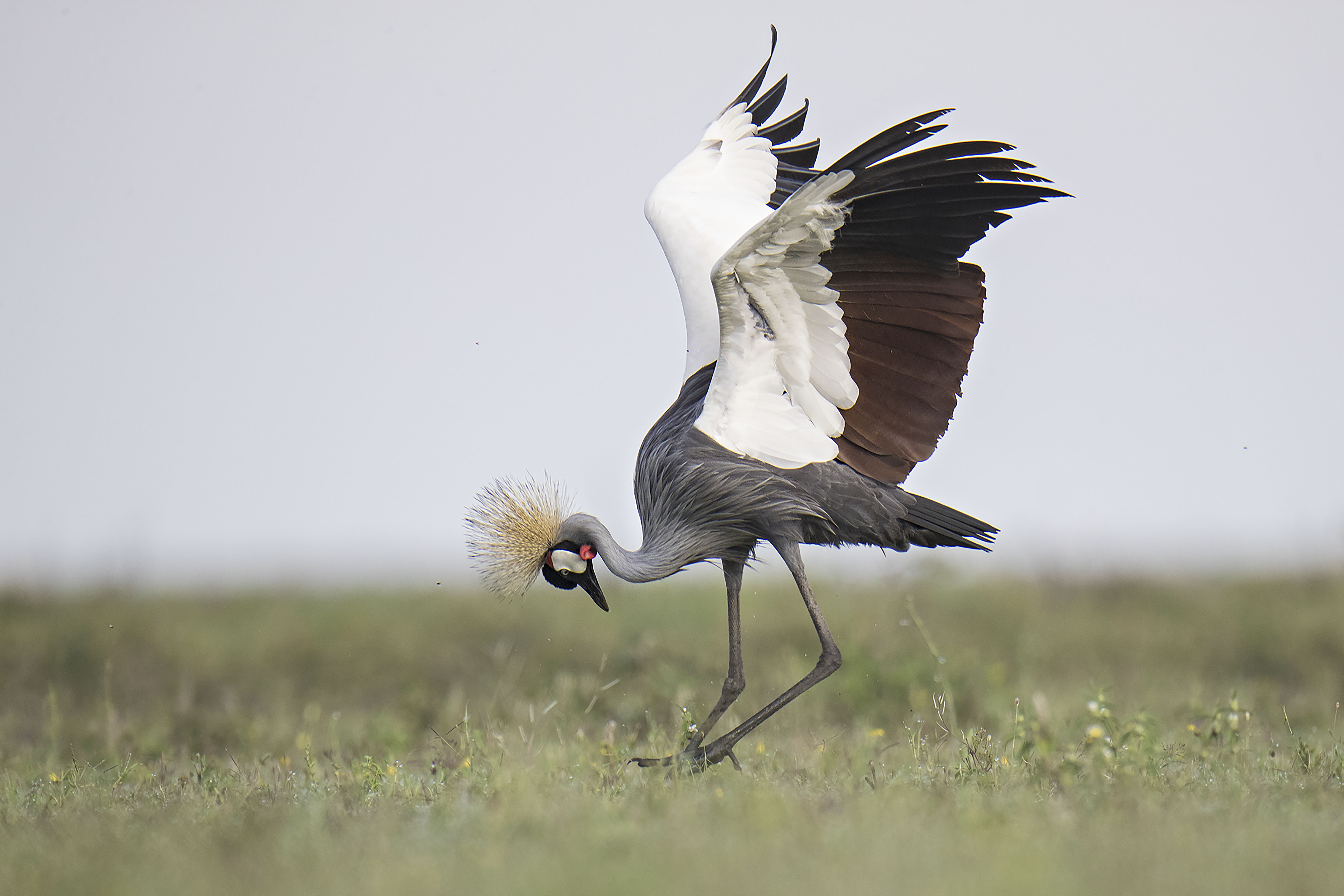Grey Crowned-crane
(Balearica regulorum)
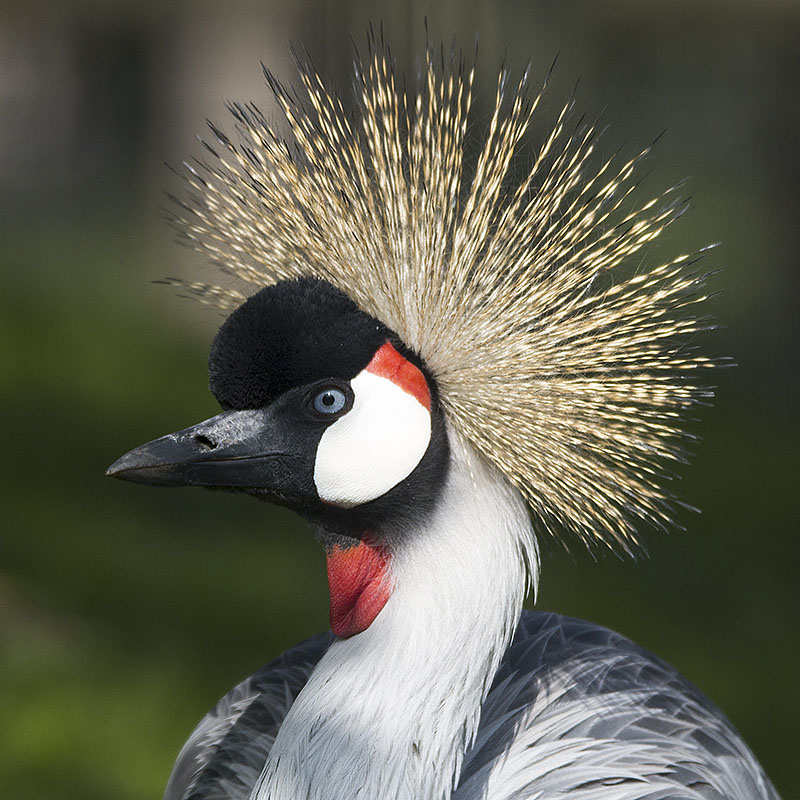
East Africa Acacia Savannah
STATISTICS
Height up to
110 cm
Weight up to
4 kgs
Lifespan
22 years
Wingspan
200 cm
Roosting - Mutual Preening - Territorial - Visual Displays - Monogamous
The Grey Crowned-crane prefers open grasslands close to water. It also usually selects habitats with trees as it is one of the two crane species that can nest in trees due to its long hind toes. It’s plumage includes a yellow crown with black tips, white cheeks with a reddish tint, a red sack at the bottom of its chin, and pearly grey neck feathers.
This species mates for life and courtship includes a mating dance (which can be initiated by either sex) with both cranes bobbing, bowing and jumping. Mating season correlates with precipitation patterns, with peaks during wetter periods. Mutual preening continues between pairs outside of breeding season, supporting monogamous bonds. The female lays 2 – 4 eggs with incubation taking up to 30 days and both sexes construct the nest and incubate the eggs.
The Grey Crowned-crane is omnivorous, eating seeds, insects, worms, and small animals such as lizards. This species is an important seed disperser for specific plants. Though the Grey Crowned-crane is a non-migratory birds, it does move in relation to food and water sources with populations in drier regions moving extensively.
BIODIVERSITY BENEFIT
Seed Dispersal
THREATS
Habitat Loss
Loss and degradation of wetlands due to agricultural pesticides and over-grazing.
Dam Construction
For hydro-electric power.
Electrocution
Colliding with powerlines.
PROTECT THE WILDARK 100
